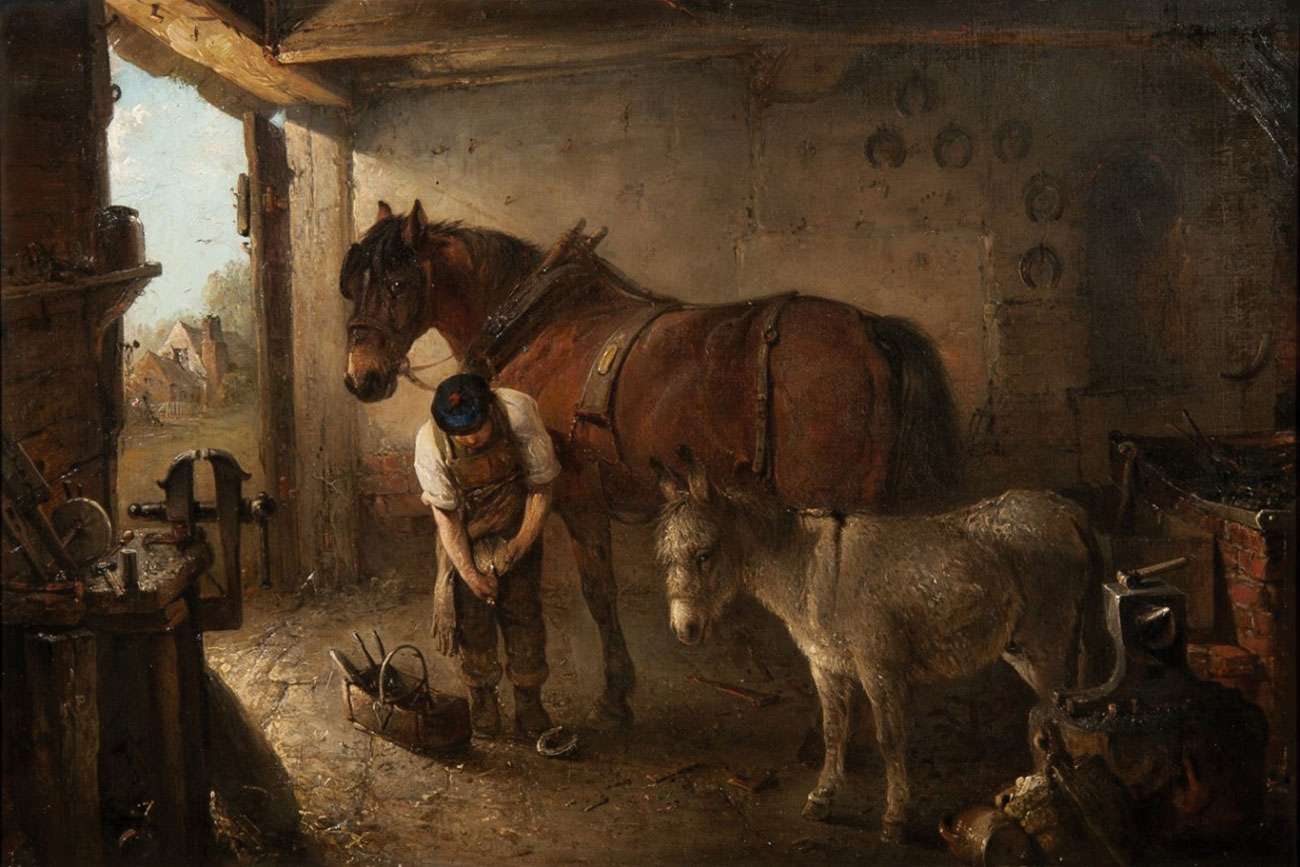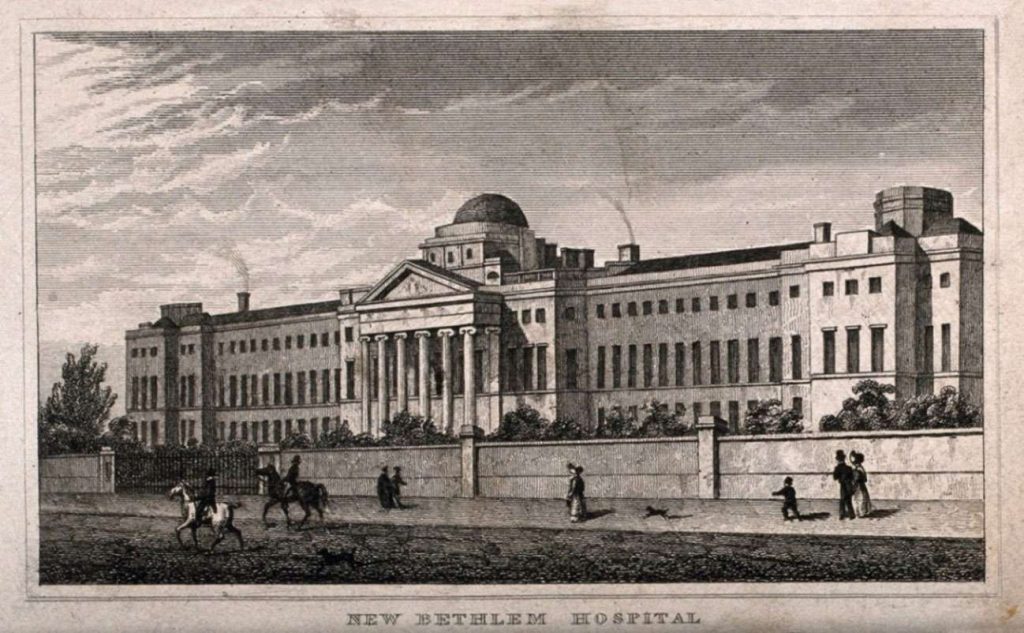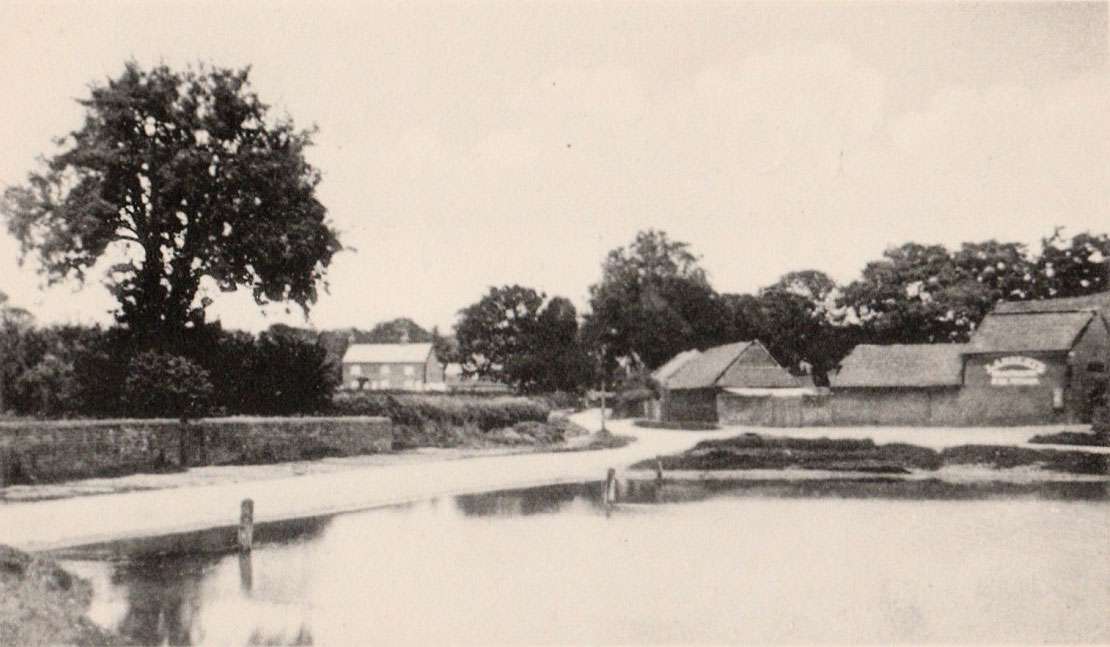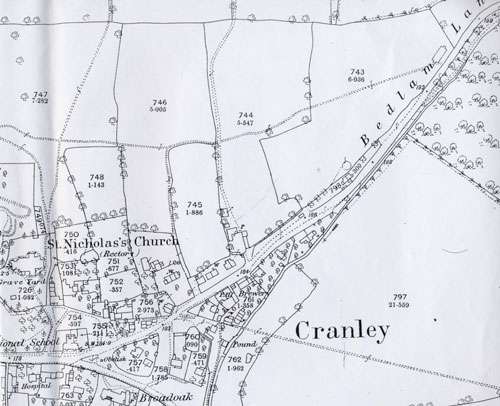
A 19th-century farrier, painted by the Suffolk artist, Edward Robert Smythe (1810-99)
For centuries, Cranleigh did not have road-names, and did not need them. The village consisted of two clusters of houses, one around the Common and the other near the parish church, plus the outlying farms. The road linking the Common and the church was referred to as ‘The Street’. If a Cranleigh person needed to supply a more precise address – perhaps when recording a birth, marriage or death for the parish register – he would give the name of the farm where he lived and worked, or ‘On the Common’, ‘In the Village’, ‘Under the Hill’, or ‘In the Street’.
The first roads (or tracks) to be given names were those leading out of Cranleigh. Even these names were not in regular use until the middle of the nineteenth century. The letters written by the rector’s wife to her son in the 1820s and 1830s show members of the rector’s family and their friends constantly moving around the district, but they apparently did not need to give names to the routes they used.
One road which is named from the 1820s is Bedlam Lane or, as we would say, Madhouse Lane. This was applied to what is now Ewhurst Road. Its route incorporated the present Bedlow Lane. Bedlam was the home in London for mad people, originally Bethlehem Hospital. We can only speculate as to why Ewhurst Road had this derogatory name: perhaps because of the chaos which ensued when the stream rose and made the road impassable.
Bedlam Lane on the Ordnance Survey map of 1871
By the middle of the 19th century, the other roads leading out of Cranleigh also had names, but we might not recognise them today. Horsham Road for instance was known as Clapper Lane. This came from the clapper bridge where the Cranleigh Waters crossed from one side of the road to the other (near the Hitherwood turning today). A clapper bridge was a basic pedestrian bridge, made of planks or slabs of stone resting on piles of stone. It was probably to one side of the road, while carts went through the water. The bridge is marked on early maps.
In the 19th century, the road leading south from Cranleigh Street was always known as Crow Lane. There are still plenty of crows, rooks and jackdaws in Cranleigh today. By 1871, the stretch of road leading to the entrance to Knowle began to be called ‘Knowle Lane’.
Continuing clockwise, Eldenbridge Lane seems to have been the original name for what we call Elmbridge Road. The name is on a map of 1793, and in 1837 the Vestry (forerunner of the Parish Council) agreed ‘to take Elden Bridge into their possession to keep it in repair’. Its name can be traced right back to a lady called Agnes de Ildenesbrig in 1241! The road name had contracted to ‘Elmbridge Lane’ by the 1871 Census and became ‘Elmbridge Road’ by 1891.

Bedlam Hospital, London: now the Imperial War Museum (Wikimedia)
The track leading to Guildford received an upgrade in 1819, when a group of wealthy local men secured an Act of Parliament to turn it into a Turnpike Road, and, in return for their investment in it, received the right to levy tolls on people, cattle and vehicles using it.
The toll gate on the Common nearly opposite the present shop ‘Natural Life’ had a cottage next to it for the gate-keeper. This official often had another job, and the work of opening the gate and receiving the toll was done by his wife. The tolls were greatly resented and people resorted to various means to by-pass the gates. The trustees of the turnpike road did not make the expected profit out of it. Besides toll-avoidance, constant extra loads of stone were needed to maintain the road, as previous ones disappeared into Cranleigh’s bottomless clay.
In 1867 maintenance of turnpike roads was taken over by county councils, and they were called ‘main roads’. Our turnpike road became known as Guildford Road.

Horseshoe Lane, around 1902 (courtesy of Vera Wilkinson)
Horseshoe Lane was probably named because of a blacksmith or farrier having a forge there. For about 60 years, some people attempted to replace the name with ‘College Road’ after Cranleigh School, originally the ‘Surrey County School’. Maybe it sounded more distinguished. Eventually the name ‘Horseshoe Lane’ prevailed.
All the delightfully graphic old names arose from local people’s descriptions of the roads. In the late nineteenth century, the old names were gradually changed to refer to the village or principal building they were leading to. They became more informative, but standardised and bland. For about 50 years both the old names and the new were used, but by around 1900 the new names had become established. The only old one to survive is Horseshoe Lane.
The Cranleigh History Society meets on the second Thursday of each month at 8.00pm in the Band Room. The next meeting will be on Thursday February 10th, when Mike Payne and Stephen Dennison will speak on ‘Cranleigh’s Arts Centre: village school, now the community’s cultural hub’.













Really interesting, thank you.